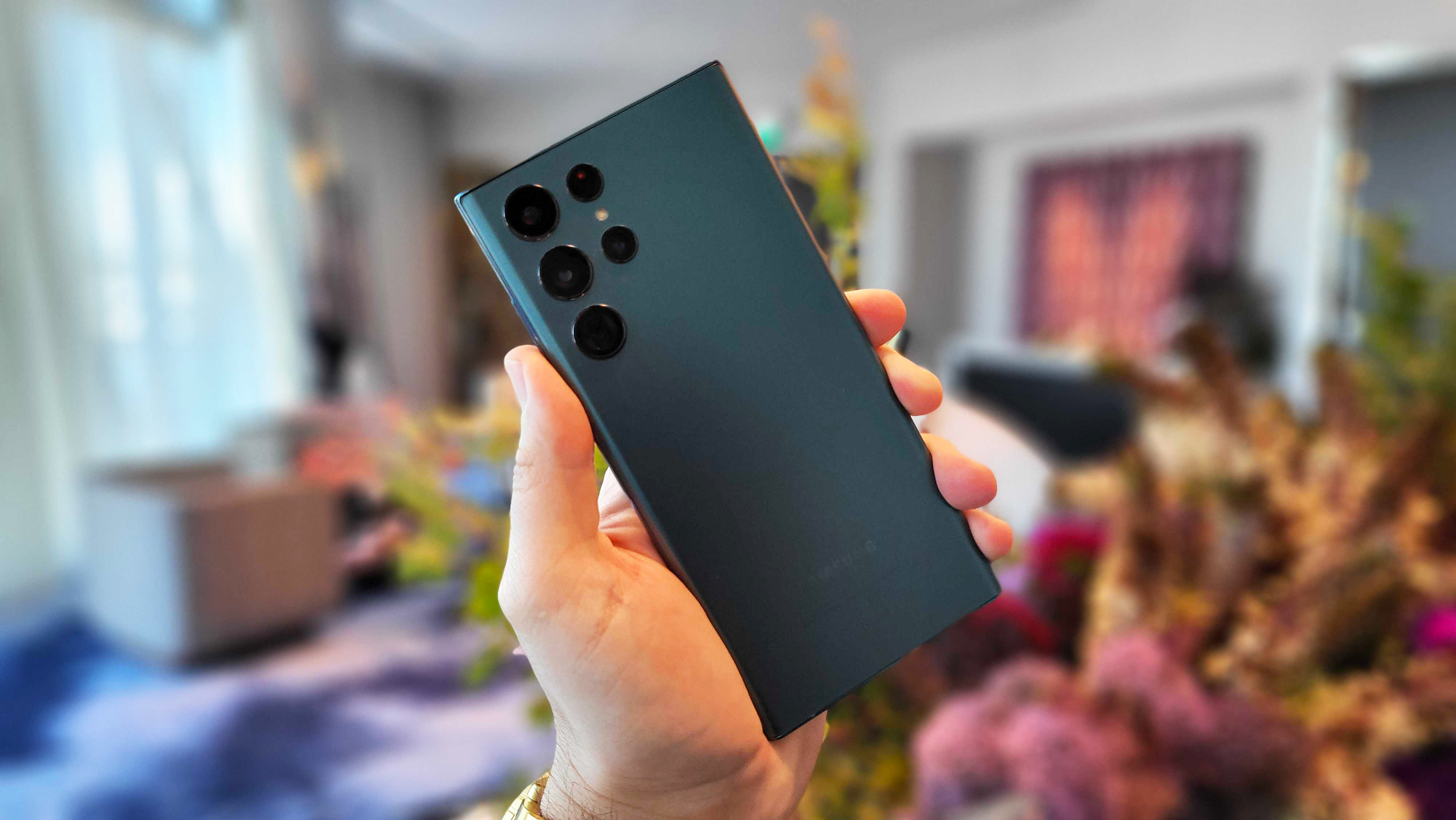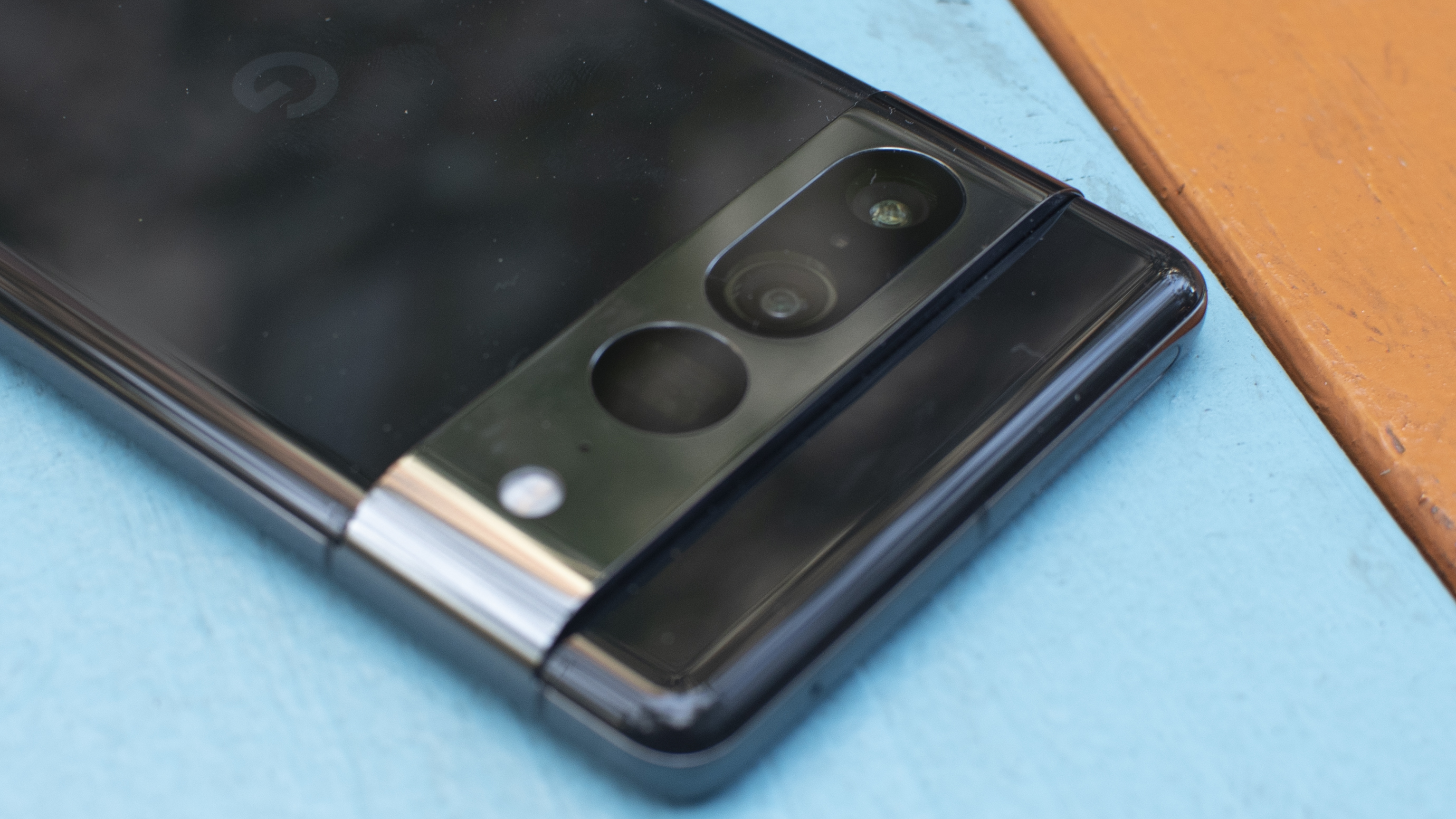Google Pixel 7 Pro vs Galaxy S22 Ultra: Has the Android king met its match?

Google has announced its latest flagship phone, the Pixel 7 Pro. If it’s to rule the Android roost, however, it’s going to have to contend with the Samsung Galaxy S22 Ultra.
Samsung’s super-sized flagship is the current top dog (just take a look at our selection of the best Android phones and best phones to see what we mean), with a comprehensive package that combines a top-notch display with a fabulously flexible camera system, competitive performance, and a unique S Pen stylus. It doesn’t get better than this. Or does it?
Can Google overturn its rival and occasional partner? After a promising start with 2021’s Pixel 6 Pro, any significant improvement certainly has to potential to make Samsung sweat over its dominant position.
Let’s take a closer look at how these pocket-filling flagships compare to one another.
Pixel 7 Pro vs S22 Ultra price and availability

The Pixel 7 Pro is available as of October 13, 2022. Prices start from $899 / £849 / AU$1,299 for the 128GB model, while there’s also a 256GB variant available at $999 / £949 / AU$1,449 and in some markets a 512GB option ($1,099 / AU$1,599)
The Samsung Galaxy S22 Ultra landed on February 25, 2022. Prices start from $1,199.99 / £1,149 / AU$1,849 for the 8GB RAM / 128GB model, moving up to $1,299.99 / £1249 / AU$1,999 for 12GB RAM / 256GB. You’ll pay $1,399.99 / £1,329 / AU$2,149 for a further bump up to 12GB RAM / 512GB, while the range tops out at $1,599.99 / £1,499 / AU$2,449 for 12GB RAM / 1TB.
There’s more range in the Samsung Galaxy S22 Ultra family, then, but it costs a lot more than the Pixel 7 Pro, whichever spec you opt for.
Sign up for breaking news, reviews, opinion, top tech deals, and more.
Pixel 7 Pro vs S22 Ultra design

The Pixel 7 Pro is Google’s second attempt at the design template it first sketched out with last year’s Pixel 6 Pro. It remains one of the most striking phone designs on the market.
Most distinctive of all is the Pixel’s camera visor, which runs from one edge of the phone to the other, though this time it’s formed from shiny recycled aluminum, and it now blends neatly into the frame of the phone itself.
It looks particularly good in the new Hazel color option (pictured above), which combines a green-gray rear section with a gold-tinged camera module. This sits alongside Snow (white) and Obsidian (black) options.
Samsung’s design also directly references its predecessor, as well as the beloved and now-defunct Galaxy Note series. It’s a huge slab of a phone with dual curved sides and flat top and bottom edges.
We called the phone “An inarguably beautiful device” in our review, though its simple segmented camera module lacks the iconic design of the Pixel 7 Pro. It comes in way more colors though: Phantom Black, White, Burgundy, Green, Graphite, Red, Sky Blue, and Bora Purple.
It’s a fraction bigger than Google’s phone too, at 163 x 77.9 x 8.9mm vs 162.9 x 76.55 x 8.9mm. Meanwhile, it weighs 17g more, at 229g.
Both phones are IP68 certified, so they’re a match when it comes to water and dust resistance.
One other differentiating point the Galaxy S22 Ultra has over the Pixel 7 Pro is its integrated S Pen, which enables you to draw and scrawl notes on your screen with a tiny stylus, stashed away within the body of the phone. Whether you find this useful or so much wasted space is a matter of personal preference, but power users and productivity fiends should take note.
Pixel 7 Pro vs S22 Ultra display

The Pixel 7 Pro features a 6.7-inch display, which is slightly smaller than the 6.8-inch panel on the S22 Ultra. Both are punchy OLEDs with QHD+ resolutions and 120Hz refresh rates; so it’s largely all square for all the key screen specs.
There is a slight difference with that 120Hz refresh rate, however. While both are variable, the Galaxy S22 Ultra can drop right down to 1Hz where appropriate, whereas the Pixel 7 Pro can only drop to 10Hz. It’s a small point, but it means Samsung’s display is more energy efficient.
That’s a good job, because the Galaxy S22 Ultra can get quite a bit brighter than the Pixel 7 Pro. We’re talking 1750nits peak brightness for the Samsung, compared to 1500nits on the Pixel 7 Pro.
While the Galaxy S22 Ultra appears to have the slight edge in the display department, we really are talking about a few minor advantages here and there. These are likely to be two of the best smartphone displays on the market, so this probably shouldn’t be used as a metric for deciding between the two.
Pixel 7 Pro vs S22 Ultra camera

The Pixel 7 Pro gives you a 50MP main camera sensor, a 12MP ultra-wide sensor (with autofocus), and a 48MP telephoto sensor. Its ultra-wide supplies a wider 125 degree FOV than before, and can be used for macro shots.
Its telephoto camera can hit a 5x optical zoom, and up to 30x with digital zoom and Google’s clever algorithms.
The Samsung Galaxy S22 Ultra camera system is quite a bit more impressive, at least when it comes to the hardware set-up. It’s a quad-camera array with a 108MP wide, a 12MP ultra-wide, and twin 10MP telephoto sensors.
One of those telephoto cameras can achieve a 3x optical zoom, while the other can go all the way to a 10x zoom. It’s seriously impressive stuff, and we’d be surprised if Google’s phone can match it, even with the company’s peerless image processing know how.
Around front, the Pixel 7 Pro has a new 10.8MP selfie camera, while the Galaxy S22 Ultra goes with a more pixel-packed 40MP offering. Both feature autofocus, yielding sharper selfies than most other phones.
While Samsung has the advantage in hardware, Google traditionally has the better algorithms and image processing chops. Its color science also tends to be cooler and crisper, while Samsung’s is warmer. Neither is what you’d call natural, exactly.
Google has learned some new tricks with the Pixel 7 Pro, thanks to its Tensor G2 chip. Night Sight shots can shoot twice as quickly as before, while Photo Unblur looks to be a faintly magical addition that can sharpen up blurry shots; even those not taken on the Pixel.
Pixel 7 Pro vs S22 Ultra specs and performance

As we just mentioned, the Pixel 7 Pro runs on Google’s new Tensor G2 chipset, which is a relatively minor improvement over the Pixel 6 Pro’s Tensor G1; itself not exactly the fastest chip on the block.
The Galaxy S22 Ultra, on the other hand, runs on Qualcomm’s Snapdragon 8 Gen 1 chip. For raw CPU and GPU performance, it’s flat-out faster. Of course, UK and Australia customers get Samsung’s own Exynos 2200, which doesn’t have quite the same performance edge but still out-classes the Pixel's chip.
One thing both the Snapdragon and Exynos lack compared to the Tensor G2 is Google’s machine learning special sauce. This enables such unique functions as real-time speech transcription, supernaturally-clear voice calls, and that magical photo deblurring technique.
Google also claims that the new processor is more energy-efficient than before. It’s built to a 4nm standard, though that’s the same as both Galaxy S22 Ultra chips.
Both phones give you a generous 12GB of RAM, though while that’s uniform on the Pixel 7 Pro, the Galaxy S22 Ultra only supplies it as an option. The entry model only has 8GB.
On the storage front, however, the Galaxy S22 Ultra grants you far more headroom. Alongside the 128GB, 256GB and (in some markets) 512GB offered by the Pixel 7 Pro, you can also go for a capacious 1TB version of the S22 Ultra, if you desire.
Pixel 7 Pro vs S22 Ultra battery

Both of these super-sized phones supply a 5,000mAh battery, which is almost par for the course for modern flagship Android phones.
The Tensor G2-powered 7 Pro does thankfully outperform its predecessor, which didn’t enjoy amazing stamina. It wasn’t exactly problematic, but we found that the phone would struggle to make it through a day of heavy usage.
As per Google's claims the 7 Pro can hit 24 hours of usage in normal conditions, and up to 72 hours with its updated Extreme Battery Saver mode.
Of course, the Galaxy S22 Ultra doesn’t have particularly impressive stamina either. Much like the Pixel 6 Pro, it could get us through a day of mixed usage, but not much more.
Both phones give you wireless charging on top of the usual wired offering. Neither manufacturer gives you a charger in the box, but Samsung does at least support up to 45W wired charging, while Google’s phone only stretches to 30W.
Takeaway
Samsung has created one of the best phones of 2022 in the Galaxy S22 Ultra, which leaves Google with plenty to do with its Pixel 7 Pro.
It gets off too a great start in undercutting its rival by hundreds of dollars/pounds, not to mention a classy refresh of the Pixel 6 Pro design template.
The rest is a little murky with promised features not arriving until well after the phone's release.
With that being said, Google has made a number of small improvements to its display, power, design, and camera system, which could be enough to draw it level or even push it above the Galaxy S22 Ultra in the eyes of potential buyers.

Jon is a freelance journalist who has been covering tech since the dawn of the smartphone era. Besides TechRadar, his words and pictures have appeared in The Telegraph, ShortList, Tech Advisor, Trusted Reviews, Expert Reviews, and more. He largely covers consumer technology, with a particular focus on smartphones and tablets. However, he's also been known to dabble in the worlds of entertainment and video games.